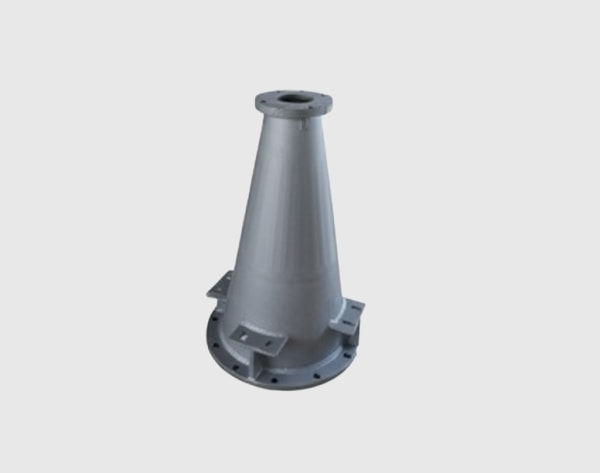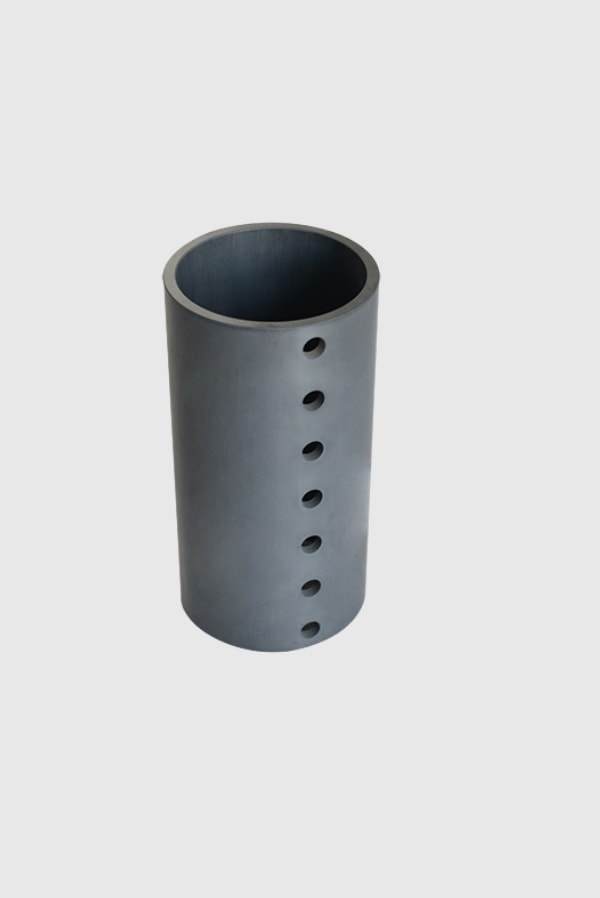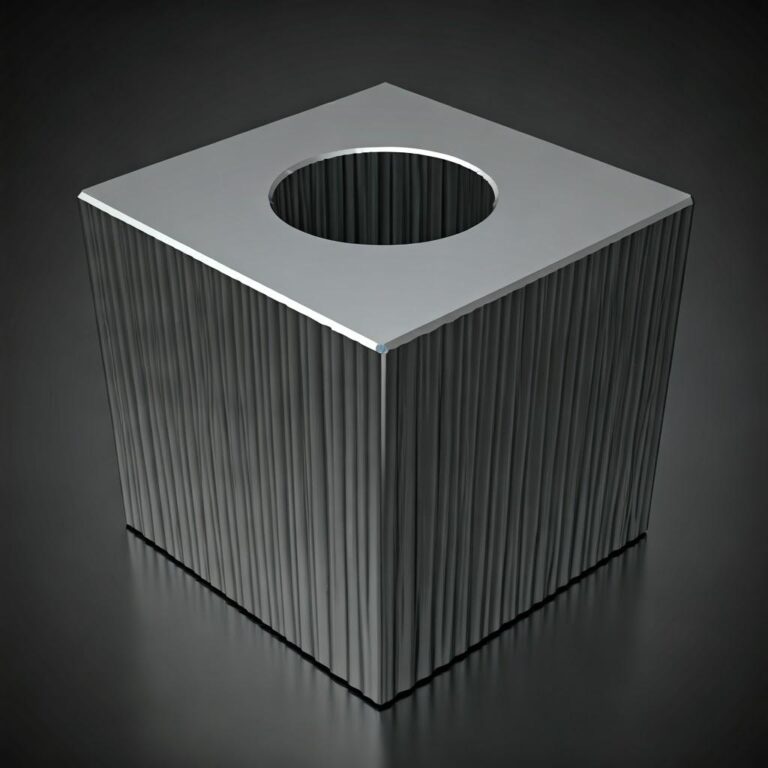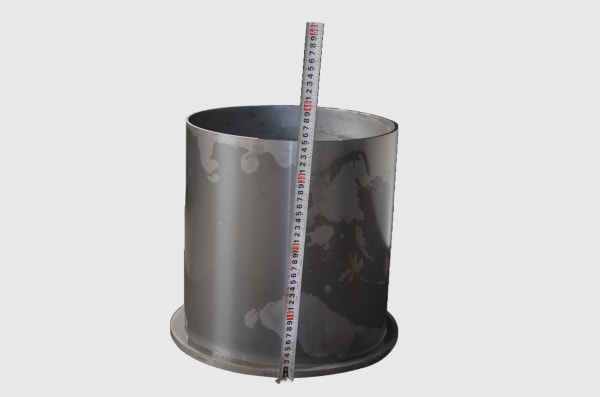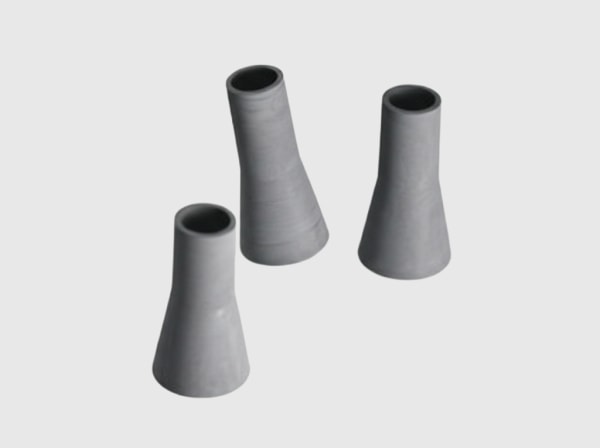Executive Summary: 2025 Outlook for High-Efficiency, High-Power-Factor SiC Drives in Pakistan’s Cement Sector
Cement plants across Pakistan are under simultaneous pressure to cut specific electricity consumption, stabilize clinker quality, and comply with grid power-quality requirements. Kiln main drives and raw/cement mills sit at the heart of this challenge: they are high-inertia, often throttled or operated away from optimal points, and they suffer from poor power factor, harmonic distortion, and mechanical shocks at start and during load changes. In 2025, the most credible path to measurable savings and better availability is a silicon carbide (SiC) variable-frequency architecture with active front end (AFE), cascaded multilevel or interleaved inverter stages, and low-parasitic, double-sided-cooled power modules. This combination delivers near-unity power factor, lower total harmonic current, smoother low-speed high-torque operation, and a step change in reliability.
Sicarbtech—Silicon Carbide Solutions Expert—operates from Weifang City, China’s silicon carbide manufacturing hub and is a member of the Chinese Academy of Sciences (Weifang) Innovation Park. With 10+ years of SiC customization and 19+ enterprise collaborations, Sicarbtech provides a full-cycle stack: R‑SiC, SSiC, RBSiC, and SiSiC materials; automotive-grade devices; double-sided-cooled modules; AFE and multilevel topologies; gate-drive protection libraries; hybrid cooling; and online health monitoring linked to MES traceability. For Pakistan’s cement corridors in Karachi, Lahore, and the north, Sicarbtech’s turnkey technology transfer and local screening compress lead times, stabilize PKR-denominated O&M, and turn measured improvements in energy and stability into bankable value.
Industry Challenges and Pain Points: High Inertia, Variable Loads, and Harsh Plant Environments
Cement processes make tough demands on drives. Kiln main drives run continuously at low speed and high torque, with rare starts but high mechanical consequence when they occur. Raw and cement mills encounter frequent impact loads as feed composition and material size fluctuate; they require wide-range speed control to avoid plugging and maintain optimal mill filling. Conventional silicon two-/three-level drives often operate with lower efficiency and degraded power factor, while grid-side harmonics and flicker invite interconnection disputes. Starts can impose large inrush currents that shock both the grid and mechanical components, accelerating wear on gears and bearings.
Furthermore, DC-bus quality is a recurring issue. Long cable runs across large plants, paralleled cabinets, and multi-axis interactions can excite oscillations. Overshoot and ringing during load steps, recirculation events, or torque reversals stress semiconductors and capacitors, triggering overvoltage trips and forcing conservative control tuning. The result is slower dynamics that compromise kiln-speed matching and mill load stability. Operators pay twice: first in energy waste and then in quality drift, with off-spec clinker and cement variability.
Environmental realities compound the problem. Dust and oil mist penetrate cabinets; heat builds at noon in summer; and salt-laden air along the coast corrodes exposed metals. Single-sided-cooled modules with commodity interface materials can exhibit pump-out and voiding under thermal cycling, raising junction-to-case resistance and creating hotspots. Cold-plate scaling and clogged fins degrade heat transfer, forcing derating precisely when demand peaks. Maintenance windows are short; when failures occur, imported spare modules and inconsistent batch quality extend downtime.
Procurement and financing increasingly demand evidence. Tenders reference IEC 60747 (device characteristics) and IEC 60068 (damp heat, dust, salt spray, vibration, shock), and EMC expectations are similar to IEC 61800‑3 for adjustable speed systems. Targets for power factor and THDi near ≤5% are appearing in interconnection requirements. As Engr. S. Khan, a regional drives specialist, notes, “In 2025, claims don’t pass. Measured PF/THD, ripple envelopes, and thermal histories are what move a project from CAPEX approval to energization.” [Source: EV and Industrial Drives Roundtable, 2024]
Advanced Silicon Carbide Solutions Portfolio: Sicarbtech’s VFD Stack for Kilns and Mills
Sicarbtech addresses cement applications through coordinated co-design across devices, packaging, busbars, topology, gate driving, thermal management, EMC, monitoring/O&M, and quality traceability. High-voltage, high-current SiC MOSFETs and diodes (1200/1700 V classes) are integrated into low-inductance, double-sided-cooled power modules with embedded junction-temperature and current sensing. Pressure-assisted sintering and vacuum brazing minimize voids and stabilize thermal cycling life; layered, shielded busbars compress loop area and reduce dv/dt stress.
On the grid side, an active front end drives power factor toward 0.99 and constrains THDi toward ≤5% (site-dependent). On the motor side, cascaded multilevel or interleaved inverters reduce device stress, lower filter requirements, and deliver clean waveforms for low-speed torque. Gate drivers implement fast soft turn-off, active clamping, and microsecond-level short-circuit protection so disturbances do not cascade into device failures. A low-impedance DC bus with active snubber/damping suppresses ripple and overshoot across long cables and paralleled cabinets.
Thermal management is tuned for dusty, hot, oil-mist environments: liquid or air–liquid hybrid baseplates with high-conductivity interfaces, anti-clog channels, and cleaning-friendly manifolds. Cabinet protection includes conformal coating, selective potting, and sealing appropriate to dust and salt mist. Online health monitoring tracks junction temperature estimates, interface thermal-resistance trends, gate health via charge/discharge characteristics, DC-bus oscillation, and vibration/bearing proxies. Control libraries coordinate kiln speed and mill load, with functions for anti-plugging, impact mitigation, and energy optimization.
Production-to-field traceability is anchored by an MES that links device lots, packaging parameters, electrical/environmental screens, and site commissioning records to operational events. The result is faster root-cause analysis, cleaner warranty handling, and audit-ready dossiers for tenders and insurers.
Energy and Power Quality Performance: SiC VFDs Versus Conventional Drives
Efficiency, Power Factor, Harmonics, and DC-Bus Stability for Kiln and Mill Duty
| Atributo | Sicarbtech SiC VFD (AFE + Multilevel/Interleaved) | Conventional Silicon Two-/Three-Level VFD | Mixed Silicon with Passive Bus Control | Impacto operacional no Paquistão |
|---|---|---|---|---|
| System efficiency (typical) | +2%–4% higher | Linia bazowa | +0%–1% | Lower PKR/MWh, cooler cabinets |
| Power factor (site-level) | ≥0.99 with AFE | 0.85–0.95 | 0.9–0.96 | Fewer penalties, more capacity |
| THDi at interconnection | ≤5% (site dependent) | 10%–20% | 8%–15% | Easier compliance, smaller filters |
| Start/impact current | −50%–80% vs DOL or weak VFD | Alta | Moderado | Less grid flicker, less wear |
| DC-bus ripple (p‑p) under events | −30% to −50% | Alta | Moderado | Fewer trips, steadier control |
By uniting AFE power quality with low-parasitic SiC modules and active DC-bus damping, Sicarbtech’s architecture turns chronic sources of trips and inefficiency into measurable margin.
Real-World Applications and Success Stories in Pakistan
A kiln main-drive retrofit in southern Pakistan deployed AFE with a cascaded multilevel SiC inverter and layered DC bus. Site power factor rose to at least 0.99, THDi trended near 5%, and annual electricity consumption dropped by approximately 3%–4%. Start/stop impact events fell by around 60%, reducing mechanical stress on the drivetrain.
A raw mill modernization near Lahore implemented interleaved SiC inverters and active DC-bus snubbing. Soft-start peaks reduced by roughly 70%, mitigating grid voltage fluctuation, while mill trip rates fell by about 30%. Operators reported improved load stability during feed composition swings.
A cement mill in Faisalabad added online health monitoring with gate-health analytics and interface thermal-resistance tracking. Early warnings appeared 2–4 weeks ahead of failure, allowing planned replacements during scheduled stops and cutting unplanned downtime by roughly 35%. MES-backed traceability accelerated root-cause analysis and closed warranty cases faster.



Technical Advantages and Implementation Benefits with Local Regulatory Compliance
At 2–10 kHz, SiC’s lower switching and conduction losses allow tighter current control and stable low-speed high-torque output without overwhelming thermal limits. Double-sided cooling and high-conductivity interfaces cut junction-to-case resistance, reducing hotspots that otherwise drive premature aging. Layered, symmetric busbars shrink loop area, lowering dv/dt stress and overshoot and improving EMC margins. Active DC-bus damping controls oscillations across long cables and parallel cabinets, maintaining four-quadrant stability.
Compliance is designed in. Device characteristics map to IEC 60747; environmental endurance follows IEC 60068 for damp heat, dust, salt spray, vibration, and shock; and EMC meets design expectations similar to IEC 61800‑3 for adjustable speed drives. Power-quality goals of PF near 0.99 and THDi around ≤5% (site dependent) support interconnection. Quality governance aligns with ISO 9001 and IATF 16949, and MES serialization provides auditable traceability. “When a proposal lands with PF/THD plots, ripple envelopes, and thermal histories from representative loads, approval becomes a planning exercise,” says Dr. H. Rehman, industrial power electronics advisor. [Source: Regional Power Electronics Workshop, 2024]
Custom Manufacturing and Technology Transfer Services: Sicarbtech’s Turnkey Advantage for Cement Drives
Sicarbtech’s edge is transferring capability, not just equipment. As a member of the Chinese Academy of Sciences (Weifang) Innovation Park, Sicarbtech leverages proprietary processes across R‑SiC, SSiC, RBSiC, and SiSiC to build thermally robust substrates and assemblies that survive dust, heat, and oil mist.
The technology transfer package includes detailed process know-how—pressure-assisted sintering profiles; vacuum brazing atmospheres, flux control; metallization/passivation stacks; and busbar/bond geometries optimized for low inductance. Gate-drive recipes cover soft turn-off, active clamping, and rapid desaturation detection calibrated for high-inertia duty. Equipment specifications span sintering presses, vacuum furnaces, wire/ribbon bonders, inline electrical testers, power-cycling rigs with junction temperature estimation, HTRB/HTGB setups, EMC pre-compliance stations, and IEC 60068 environmental chambers—each delivered with acceptance tests, calibration procedures, and vetted vendor lists.
Training builds in-country resilience: operator certification, failure analysis and cross-section techniques, SPC-driven yield improvement, and PPAP-like control plans aligned with ISO 9001 and IATF 16949. Factory establishment services include feasibility studies, utilities and layout, line installation and commissioning, pilot runs, parameter locking, and capability validation. After SOP, quarterly audits and yield sprints drive continuous improvement, while co-development adapts packaging, busbars, and control strategies to Pakistan’s ambient profiles and maintenance practices. Across 19+ enterprise collaborations, partners have achieved faster time-to-market, higher first-pass yields, fewer field failures, and spare availability measured in days or weeks—vital for tight outage windows in cement plants.
Comparative Engineering Choices and Lifecycle Economics
AFE, Multilevel, and Bus Architecture Choices that Stabilize Kiln and Mill Operation
| Design Area | Sicarbtech SiC Best Practice | Conventional Alternative | Practical Outcome in Pakistan |
|---|---|---|---|
| Grid interface | Active front end (PF≈0.99, THDi≈≤5%) | Diode/thyristor rectifier | Lower penalties, smoother interconnection |
| Inverter topology | Cascaded multilevel or interleaved | Two-/three-level silicon | Lower device stress, smaller filters |
| Bus architecture | Low-impedance bus + active snubber/damping | Passive RC snubbers | Ripple/overshoot suppression |
| Gate protection | Soft turn-off + active clamp + fast desat | Single-path protection | 2–5 μs shutdown, fewer ruptures |
| Packaging & cooling | Double-sided cooling, low‑L busbars | Single-sided, long leads | Lower Tj, stronger EMC margins |
Localization and Total Cost of Ownership for Cement Drive Retrofits
| Business Factor | With Sicarbtech Localization & Traceability | Import-Only Conventional Drives | Outcome for Plant Operators |
|---|---|---|---|
| Retrofit outage duration | Modular blocks, parameterized commissioning | Heavy onsite customization | Faster restart, reduced lost production |
| Energy and cooling OPEX | +2%–4% efficiency, cooler cabinets | Higher losses, more fan duty | Lower PKR/ton cement |
| Power-quality compliance | AFE meets PF/THD targets | Often marginal | Fewer disputes, easier audits |
| Spares & lead time | Local screening, days–weeks | Weeks–months | Higher uptime, lean inventory |
| Warranty & RCA | MES-backed evidence, faster closure | Fragmented records | Lower claims, better insurer confidence |
Future Market Opportunities and 2025+ Trends: Power Quality, Stability, and Data as Procurement Anchors
In Pakistan, rising electricity tariffs and a tougher compliance climate will push cement operators to retrofit high-inertia drives first. Expect tenders to require measured PF≥0.99 and THDi≤5% (site dependent), documented DC-bus ripple envelopes under representative transients, and microsecond protection timing. ESG-linked financing will weigh kWh/ton reductions, trip-related downtime cuts, and stability improvements in kiln speed and mill load. On the technology front, AFE with cascaded multilevel SiC inverters will become the reference design, while double-sided-cooled, low-inductance modules shift from “premium” to “expected.” Online health models for junction temperature, interface thermal resistance, and gate health will enable planned maintenance and optimized spares staging, converting reliability into predictable capacity.
Sicarbtech’s integrated stack—devices, packaging, bus engineering, topologies, protection libraries, validation, and factory establishment—positions Pakistani partners to replicate success from pilot to plant-wide rollouts with lower risk and tighter schedules.
Extended Technical Specifications and Local Standards Alignment
Typical DC bus platforms span 750–1100 V, with medium-voltage outputs via cascaded architectures where required. Per-unit power from 0.5–8 MW covers kiln main drives and large mills, with redundancy options. Switching frequencies of 2–10 kHz balance efficiency, noise, and filter size. Short-circuit withstand targets 3–10 μs at the device level; detect-to-soft-turn-off is engineered for 2–5 μs. Junction temperature capability reaches up to 175 °C with online estimation and thermal derating.
Power-quality objectives include PF near 0.99 and THDi around ≤5% (subject to site interconnection). Environmental protections encompass dust, oil mist, salt mist, vibration, and shock, with cabinet ingress protection and coatings selected by site severity. Monitoring covers voltage, current, junction-temperature estimation, interface thermal-resistance trends, DC-bus oscillation, vibration/bearing signals, and temperature/dust levels. Documentation maps to IEC 60747 and IEC 60068; EMC design follows expectations similar to IEC 61800‑3. Quality systems align with ISO 9001 and IATF 16949, and Sicarbtech coordinates pre-compliance with labs in Karachi and Lahore.
Perguntas frequentes
How much energy and demand-charge reduction can a SiC VFD deliver on kiln and mill drives?
Typical sites see 2%–4% system efficiency gains and power factor near 0.99, reducing both kWh consumption and kVA penalties. Soft start also lowers inrush peaks by roughly 50%–80%.
Will cascaded multilevel or interleaved inverters complicate maintenance?
No. Modular stacks with hot-swappable power blocks and MES-guided procedures shorten mean time to repair by 30%–50% and standardize spares.
Can we meet harmonic and power-factor interconnection requirements?
Yes. With an AFE, PF typically reaches ≥0.99 and THDi near ≤5% depending on site conditions, easing compliance and reducing disputes.
How does double-sided cooling improve reliability in dusty, hot environments?
Reducing junction-to-case thermal resistance by 10%–25% typically drops cabinet hotspots by 5–10 °C, extending component life and lowering fan duty.
Will faster protection cause nuisance trips on noisy lines?
Properly tuned soft turn-off, active clamping, and fast desaturation detection reduce overshoot and ringing, so false trips usually decrease even as protection acts within microseconds.
What is a realistic pilot timeline without disrupting production?
Using standardized SiC modules, busbars, and control libraries, many plants commission a pilot in 8–12 weeks, then replicate during planned outages.
How do we handle dust, oil mist, and corrosion in cooling and cabinets?
Anti-clog channels, corrosion-resistant manifolds, conformal coatings, sealing, and scheduled filtration/wash routines maintain performance under harsh conditions.
Can online monitoring really predict failures with enough warning?
Yes. Junction-temperature estimation, interface thermal-resistance trends, and gate-health analytics routinely flag degrading modules weeks ahead for planned replacement.
How does localization change spares and warranty handling?
Local screening reduces lead time to days–weeks. MES serialization links device lots and process parameters to field events, accelerating root-cause analysis and strengthening warranty positions.
Are the benefits transferable to fans, crushers, and conveyors?
Absolutely. The same low-parasitic SiC architecture, AFE, and active DC-bus control stabilize high-inertia and impact-prone drives common across cement auxiliaries.
Fazendo a escolha certa para suas operações
Variable-frequency energy saving on kiln main drives and mills is among the fastest routes to lower electricity bills, higher power factor, and steadier production. Sicarbtech’s SiC platform combines AFE power quality, multilevel or interleaved inverter stability, low-inductance double-sided-cooled modules, and microsecond protection—wrapped in online health monitoring and MES traceability. The result is predictable savings, fewer trips, and faster payback, delivered with localized capability that scales beyond a single pilot.
Obtenha consultoria especializada e soluções personalizadas
Work with Sicarbtech to scope your retrofit program: AFE sizing, cascaded multilevel vs. interleaved selection, busbar and shielding geometry, gate-driver protection timing, and cooling design. Establish local packaging and screening, pre-compliance workflows, and MES traceability to replicate success across lines and sites with confidence.
Sicarbtech — Silicon Carbide Solutions Expert
E-mail: [email protected]
Phone: +86 133 6536 0038
Headquarters: Weifang City, China’s silicon carbide manufacturing hub
“Power quality buys peace with the grid; stability buys throughput; traceability buys trust.” — Sicarbtech Applications Team
Metadados do artigo
Last updated: 2025-09-18
Next update scheduled: 2025-12-15
Content freshness indicators: reflects 2025 Pakistan cement market outlook; aligns with IEC 60747, IEC 60068, and EMC expectations similar to IEC 61800‑3; includes AFE/PF/THD targets, SiC multilevel/interleaved strategies, active DC-bus damping, online health monitoring, and localized technology transfer capabilities.

